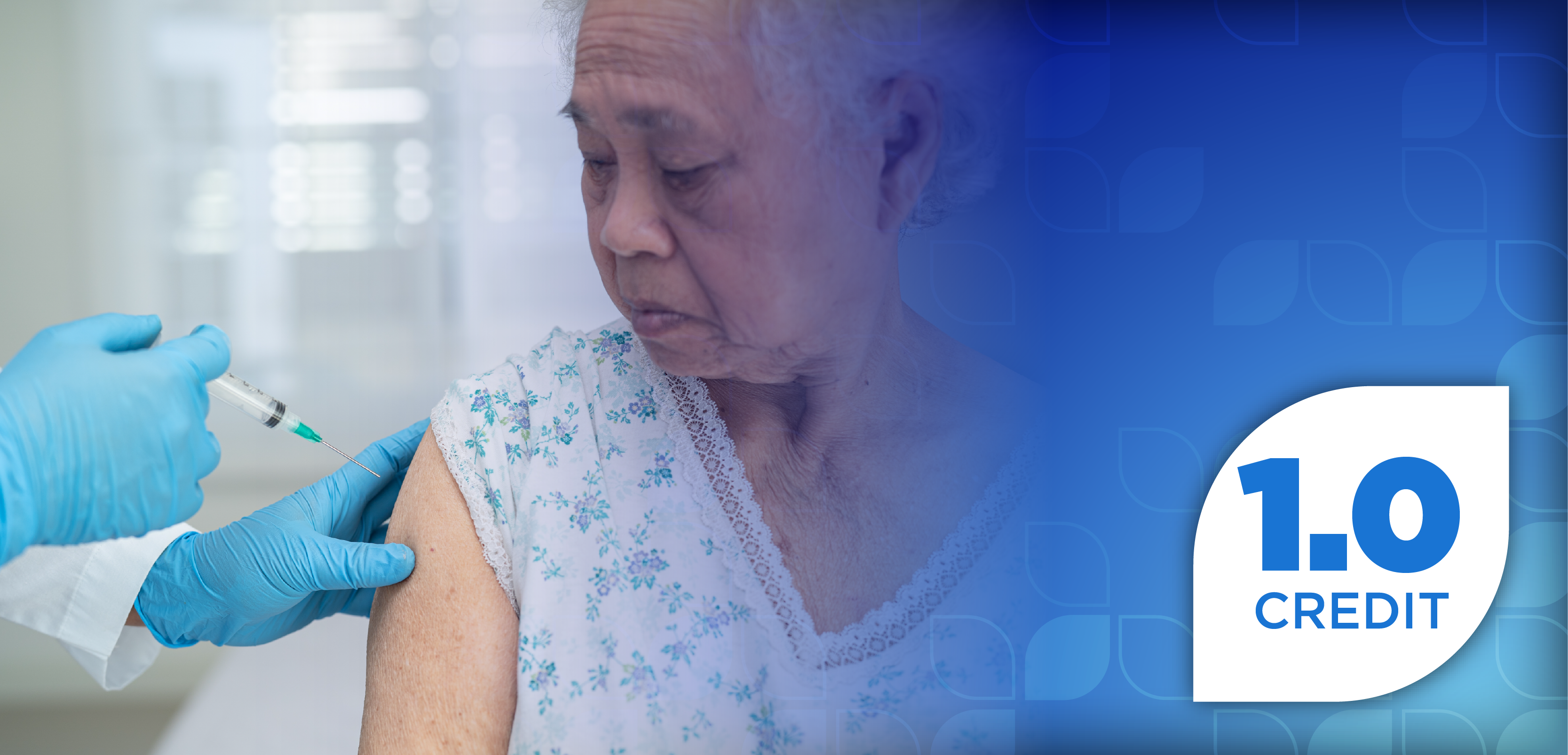
The AQUILA Debate: Daratumumab and Smoldering Multiple Myeloma

Ming-Hei Tai, PharmD, BCOP, shares his concerns about the AQUILA trial and use of daratumumab for smoldering multiple myeloma.
In November 2024, Johnson & Johnson submitted an approval application to the FDA for treatment of high-risk smoldering multiple myeloma with daratumumab (Darzalex; Johnson & Johnson), based on data from the AQUILA trial (NCT03301220). Despite seemingly positive results, Ming-Hei Tai, PharmD, BCOP, oncology pharmacist at the Karmanos Cancer Institute in Flint, Michigan, raised concerns about the trial design and need for better trial end points to determine the clinical benefit of treating this patient population with immunotherapy in an interview with Pharmacy Times®.1
Pharmacy Times: What is smoldering multiple myeloma (SMM)?
Ming-Hei Tai, PharmD, BCOP: Smoldering multiple myeloma is more of a pre-cancer diagnosis. It means that there is a risk that you have this thing going on with your plasma cells, which could develop into myeloma, but right now it hasn't developed into myeloma. And usually, we define myeloma as SLiM-CRAB. So, it means you have, you know, 60% of your plasma cell infraction in bone marrow. It means you have light chains over 100, or you have a bone lesion on your MRI. That's a SLiM criterion. Or you have the CRAB criteria, which are hypercalcemia, renal dysfunction, and anemia. And so, if you don't meet the SLiM-CRAB criteria, you are classified, usually as smoldering myeloma.
Pharmacy Times: Treatment of SMM is controversial. What do you think is the best course of action? Is it observation, or do you think that the advent of novel immunotherapies is changing that?
Tai: So, in regard to smoldering myeloma, I think right now the struggle we have is that there has not been evidence comparing this to treatment strategies. We've had therapies comparing drugs, but we haven't really had the trial comparing treatment strategies of whether patients should be treated while they have smoldering myeloma or while they have an hour after they've progressed onto multiple myeloma. So, I think right now, we should be considering close observation, or you can call it active surveillance, for most smoldering patients.
Pharmacy Times: What concerns do you have with Johnson & Johnson’s approval request for daratumumab for SMM?
Tai: Regarding the AQUILA trial, it was probably the most talked about trial at ASH [American Society of Hematology]. It was a very, very controversial trial. And what I would say about the AQUILA trial is that there were some concerns with the trial design. The first concern is that it had an end point of PFS, and we must remember that what we're doing is we're essentially comparing Daratumumab to placebo. So really, there's almost no way that this trial would not have shown a PFS benefit, because we know daratumumab works in multiple myeloma. We know that some of these patients with smoldering myeloma are going to progress into multiple myeloma, so PFS really wasn't the appropriate end point. The question should be, are we preventing end organ dysfunction? Are we helping patients live long? So, overall survival [OS] would probably have been a better endpoint.
The other issue was the lack of crossover post-protocol therapy, which is what patients received as first-line treatment for myeloma, which was inappropriate for this patient population, in my opinion. So that was a big concern. There wasn't really a lot of CD38 antibody use, but beyond that, there also were a lot of patients who received, for example, CyborD. And CyborD really isn't a regimen we would consider using unless, for example, the patient had renal dysfunction, and none of these patients had renal dysfunction, so that was kind of hard to understand.
And finally, an issue is how they defined high-risk. They chose a definition for high risk that we really don't use anymore. In smoldering myeloma, our definition is a lot narrower. So, the patients they treated—some of those patients—we wouldn't even consider high-risk today, and we probably wouldn't want to treat these patients because a lot of these patients aren't going to progress to myeloma. So that was another concern—that their definition of high risk was very, very broad.
Pharmacy Times: If we were to continue with the Aquila trial, what would be a better way to gauge whether daratumumab would work for this patient population?
Tai: Well, the AQUILA trial did have an interesting secondary analysis of PFS2 [progression-free survival], which was [PFS] on first-line myeloma therapy. In that comparison, they still did find that the patients who received the daratumumab observation had longer PFS. But the issue there is that the first-line myeloma therapy was not standardized, so what I really would have liked to see is for the investigators to have mandated a certain type of first-line myeloma therapy. For example, if we think that daratumumab works in smoldering myeloma, there's no reason it shouldn't work as first-line therapy for myeloma. So, what I'd like to see is for 1 or 2 or maybe even 3 mandatory first-line regimens for myeloma. It may or may not have to be funded by the trial sponsors. But I would like to see just a more standardized first line of therapy instead of just letting people order whatever they want and having 10 or 20 different post-protocol therapies that make it difficult to interpret PFS2.
Pharmacy Times: What should we be prioritizing in the treatment of SMM, and how do we prioritize those things?
Tai: I think we should be prioritizing better trial design. I think that's really what we should be doing. When we're looking at smoldering myeloma, we still have to answer the question of whether patients have or whether patients would actually benefit from really early therapy while they have this pre-cancer diagnosis, versus waiting until they need treatment later. So, what I really would like is the trial design that is powered for either [PFS2], which is [PFS] after first-line therapy, or [OS], or a [PFS] end point that only includes clinically relevant end points like bone fractures and renal dysfunction.
For example, in AQUILA, they did report all the progression events, and no one really had any symptomatic progression events. As far as I could tell, no zero patients had any renal dysfunction when they progressed onto myeloma from smoldering myeloma. So really, we really need patience; we really need trials that are powered to look at the end points we want. And we really need trials that have standardized first-line myeloma therapies. If patients didn't all need to get D-VRd [daratumumab, bortezomib (Velcade; Millennium/Takeda and Janssen Pharmaceutical Companies), lenalidomide (Revlimid; Bristol Myers Squibb), and dexamethasone], but if patients even got VRD [bortezomib, lenalidomide, and dexamethasone] as first-line therapy, that would arguably have been more appropriate than the first-line therapy the patients got on the AQUILA trial.
So, I would have liked to see better end points and more standardized first-line myeloma therapy, just because we have to answer the question of whether or not patients actually need treatment instead of answering the question of whether this one treatment, which is Daratumumab, reduces progression-free survival events. But these are mostly asymptomatic events.
Pharmacy Times: How do you see the evolution of SMM treatment changing, especially as clinical interest grows in treating it?
Tai: I think there are a couple of things I see changing. I think the first thing is, we're always changing our definition of what myeloma and smoldering myeloma are. Myeloma used to be only defined using the CRAB criteria. Now it's being defined by the SLiM-CRAB criteria. So, I do think that as we get a better understanding of what myeloma and smoldering myeloma are, we'll better understand what makes a patient progress onto myeloma, and maybe those patients need treatments versus these patients aren't going to progress from smoldering to multiple myeloma, and these patients don't need treatment.
So, I think that that is one of the changes we are going to be seeing in the myeloma base. The other thing I do see is more use of bispecifics. We do have a lot of great BCMA-targeted options now. We are also seeing CAR T [chimeric antigen receptor T-cell therapy] as well. I do see that we will be using more and more of these therapies in the future. The question is exactly where in the pathways we use it. But I do see that these 2 things are changing our treatment of smoldering and multiple myeloma.
Pharmacy Times: Do you have any advice for oncology pharmacists on how they should approach treating their patients with SMM?
Tai: We should observe most patients with smoldering myeloma. But you know, it did improve PFS. So, there are patients out there for whom you should really closely monitor their labs who are really worried about their smoldering myeloma treatment. So, while I’m not exactly a fan of the AQUILA trial, I could see patients using or asking about this regimen. And I think what we must remember as clinicians is that we must present them the data as objectively as possible. And so, this does improve PFS, but we also have to let them know that this also increases their incidence of grade 3 infections. And this is a great opportunity for shared decision-making because we are going to have patients who ask about this trial, who want to know how we feel about the subject, and we have to understand both the pros and cons of the AQUILA trial.
So, I wasn't a fan of it, but I would say that I still do talk about this in a pretty objective way in which we say, “Hey, this will probably prolong your PFS, but then there are all these side effects, and it's really up to you as to what decision you want to make.”
REFERENCES
1. A study of subcutaneous daratumumab versus active monitoring in participants with high-risk smoldering multiple myeloma. Updated January 31, 2025. Accessed February 7, 2025. https://clinicaltrials.gov/study/NCT03301220
Newsletter
Stay informed on drug updates, treatment guidelines, and pharmacy practice trends—subscribe to Pharmacy Times for weekly clinical insights.









































































































































































































